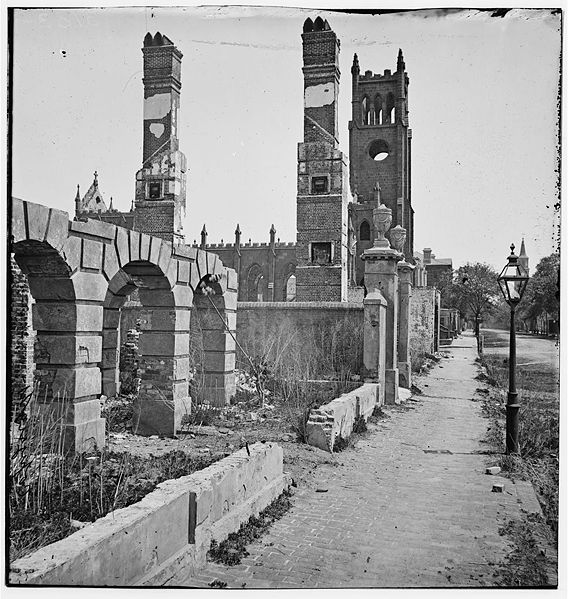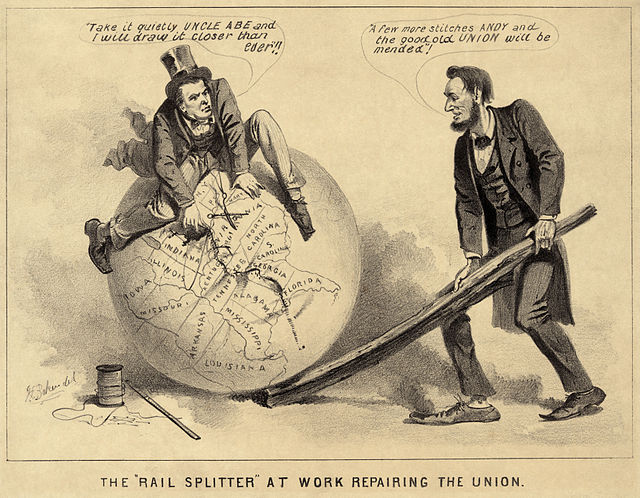The Wade–Davis Bill of 1864 (H.R. 244) was a bill "to guarantee to certain States whose governments have been usurped or overthrown a republican form of government," proposed for the Reconstruction of the South. In opposition to President Abraham Lincoln's more lenient ten percent plan, the bill made re-admittance to the Union for former Confederate states contingent on a majority in each ex-Confederate state to take the Ironclad Oath to the effect they had never in the past supported the Confederacy. The bill passed both houses of Congress on July 2, 1864, but was pocket vetoed by Lincoln and never took effect. The Radical Republicans were outraged that Lincoln did not sign the bill. Lincoln wanted to mend the Union by carrying out the ten percent plan. He believed it would be too difficult to repair all of the ties within the Union if the Wade–Davis bill passed.
Excerpt of a draft version of the Wade–Davis Bill of 1864
The Reconstruction era was a period in United States history following the American Civil War, dominated by the legal, social, and political challenges of abolishing slavery and reintegrating the former Confederate States of America into the United States. During this period, three amendments were added to the United States Constitution to grant equal civil rights to the newly freed slaves. Despite this, former Confederate states often used poll taxes, literacy tests, and intimidation to control people of color.
The distribution of wealth per capita in 1872, illustrating the disparity between North and South in that period
The Southern economy had been ruined by the war. Charleston, South Carolina: Broad Street, 1865
A political cartoon of Andrew Johnson and Abraham Lincoln, 1865, entitled "The Rail Splitter At Work Repairing the Union". The caption reads (Johnson): "Take it quietly Uncle Abe and I will draw it closer than ever." (Lincoln): "A few more stitches Andy and the good old Union will be mended."
Monument in honor of the Grand Army of the Republic, organized after the war





